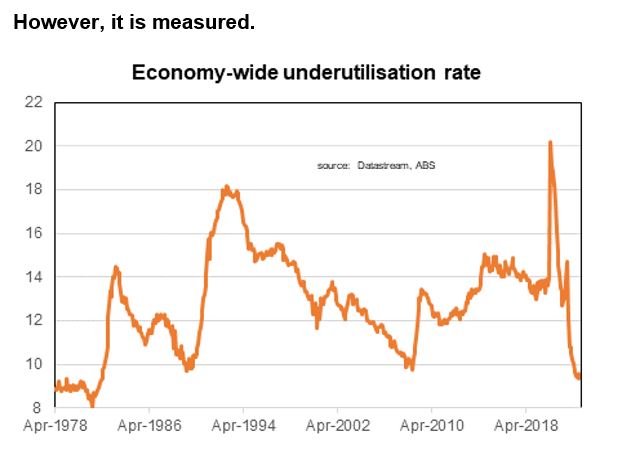
Economic and Financial Market Update: Still plenty of jobs
Summary:
- The jobs market is strong;
- The supply of workers is picking up;
- The demand for workers looks to have peaked;
- A lack of workers is likely to remain a big problem for most firms in 2023.
The state of the jobs market matters for a number of reasons. It is one of the few pieces of monthly economy-wide data. Households confident about getting a job are more likely to spend. The state of the jobs market also influences wages growth. Stronger wages growth means more income for households to spend. But if wages growth gets too far ahead of productivity growth, it increases firms’ costs and can lead to higher inflation (although higher costs can be absorbed within firm profit margins).
The October data indicated that the domestic jobs market remains strong. The unemployment rate is near fifty-year lows and the underutilisation rate the lowest in around forty. There are as many jobs as unemployed workers (in the US there have been almost two jobs for every person unemployed)! Difficulty in finding staff is the number one problem facing almost all firms. But some sectors (notably Accommodation and Food Services) are finding it a lot tougher than others. It is unsurprising that households’ think right now is a great time to find a job. Given the strength of the jobs market it is surprising that a higher proportion of workers are not thinking about changing jobs.
The jobs market never stays still. The very strong demand for labour has led to a strong rise in the supply of workers. That can be seen in the rise in the participation rate as higher wages and plentiful jobs attract more people to the labour force. But mostly, it reflects stronger immigration growth as borders have re-opened. The number of permanent and long-term immigrants is virtually back at pre-pandemic levels.
Student numbers have not fully recovered, although that at least in part reflects border closures and borders not re-opening until after the commencement of the school year. But that is changing. The number of overseas students matters. Most immediately, because many of them get jobs in the Accommodation and Food Sectors, these are the industries that are finding it toughest to attract staff. A significant percentage of foreign students also become long-term residents.
The number of job ads suggest that the demand for labour has peaked. But firms remain keen to hire more workers. The retrenchment rate is low, no surprise given the difficulty that most firms have had in finding workers. The demand for labour will slow further next year as economic growth softens. The jobs market historically moves with a lag to changes in economic growth (typically 1-3 quarters).
The economy is ending 2022 in decent shape and the demand for labour is extremely high. This means that any rise in the unemployment rate is unlikely to occur until at least the end of next year. And that means that the lack of workers is likely to remain many companies’ biggest bugbear for much of 2023.


To read my full update, click here.
We live in interesting times.
Regards,
Peter Munckton - Chief Economist


